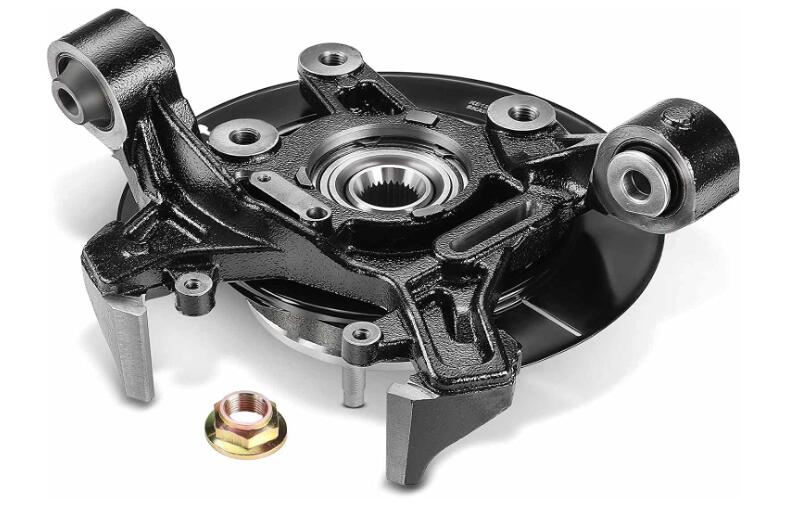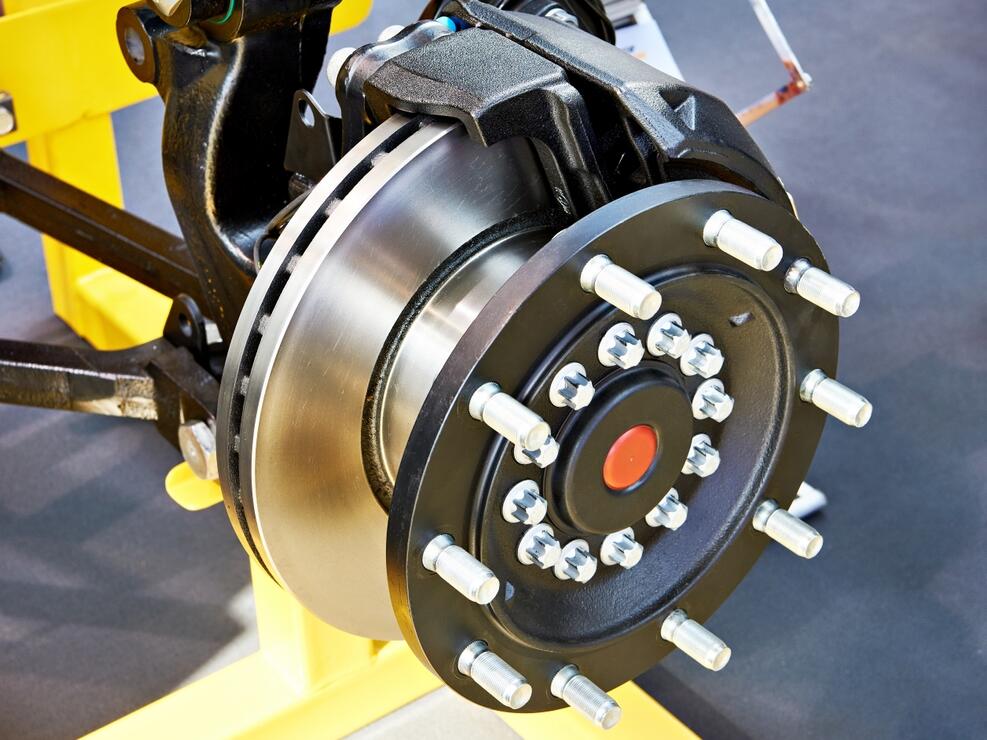Introduction
With the evolving automotive landscape, one component remains consistent in its critical role in vehicle operation – the wheel hub assembly.
This integral part, responsible for hosting the wheels, must bear immense weight, withstand high rotational speeds, and face many varying road conditions.
But how can manufacturers and automotive professionals determine whether a wheel hub assembly is up to the task?
The answer lies in a rigorous and scientifically backed process known as stress testing.
Stress testing evaluates the ability of wheel hub assemblies to endure the pressures they’ll encounter during operation, assessing their resilience, durability, and reliability.
This process is pivotal in the manufacturing and quality assurance phase, providing critical insights about the assembly’s performance characteristics.
Let’s delve deeper into the intricacies of stress testing, its importance, the methodologies involved, and how manufacturers decipher the results to ensure the production of high-quality wheel hub assemblies.
Significance of Stress Testing
Wheel hub assemblies bear the brunt of an extensive array of forces.
They must support the weight of the vehicle, its occupants, and any cargo, ensuring smooth wheel rotation even at high speeds.
Additionally, wheel hubs in many vehicles also need to accommodate steering forces and drive power from the engine.
As such, the consequences of a wheel hub assembly failure can be severe, affecting the vehicle’s control, performance, and safety.
Stress testing allows manufacturers to evaluate their wheel hub’s ability to manage these strains before they reach the vehicle.
By accurately simulating the loads and conditions the hubs will face during operation, manufacturers can validate whether the materials, design, and construction methods can deliver safe, reliable, and durable wheel hub assemblies.
Stress testing is a vital verification method for the design and manufacturing process.
The Stress Testing Procedure: More Than Meets the Eye
The stress testing process for wheel hub assemblies entails a comprehensive series of physical examinations executed in a controlled setting.
Utilizing advanced machinery, these assemblies are subjected to forces emulating the expected and extreme conditions they would encounter in real-world scenarios.
Test parameters include applying radial and axial loads to mimic the weight the hub will support and torsional forces for hubs designed to transmit drive power.
Moreover, specific tests incorporate thermal stress to replicate the high temperatures a hub would experience due to friction and braking in operation.
There may also be accelerated wear testing, which involves running the hub at high speeds for prolonged periods.
The specific test suite can vary, considering the type of vehicle the hub is designed for, its construction, and the materials utilized.
This customization of stress testing parameters ensures a thorough examination of the wheel hub assembly’s capabilities and potential weaknesses.
Decoding the Results: Understanding the Outcome
Interpreting the outcomes of stress tests involves meticulous analysis.
Manufacturers examine the wheel hub assembly for signs of deformation, cracking, or wear, which could signify a structural weakness in the hub.
The performance of the hub’s bearings is also scrutinized for smooth operation, and the seals are checked for potential leaks.
These results offer invaluable insights into the wheel hub assembly’s performance capabilities and highlight potential areas for improvement in the design and manufacturing process.
A failed stress test may signal the need for stronger materials or a design modification to distribute better the forces involved.
Conversely, if a hub surpasses expectations in a stress test, it validates the design and manufacturing choices, showcasing the product’s durability and resilience.
The Road Ahead: Evolving Stress Testing for Advanced Wheel Hubs
As the automotive industry advances, so do the requirements and expectations for wheel hub assemblies.
With the rising adoption of electric vehicles and advancements in autonomous driving technologies, the traditional role of wheel hub assembly is set to evolve.
These developments will introduce new stresses and challenges for wheel hubs, demanding stress testing procedures to keep pace.
For instance, the integration of sensors, actuators, or drive components into wheel hubs, especially in the case of in-wheel motor electric vehicles, will introduce additional heat and electrical stresses.
Meanwhile, autonomous driving technologies may require wheel hubs to tolerate higher torques and more rapid directional changes.
These new stressors necessitate advancements in testing methodologies, introducing additional parameters or more stringent testing conditions.
Leading manufacturers continuously refine their stress testing protocols, incorporating advanced computational models and cutting-edge test equipment to simulate a broader range of conditions and provide more detailed insights into their wheel hub assemblies’ performance.
From Test Bench to Real World: Bridging the Gap
While laboratory stress testing is an invaluable tool for manufacturers, it cannot fully replicate the vast conditions a wheel hub assembly might face in real-world operation.
Varying weather conditions, irregular road surfaces, and unexpected loads are just a few of the unpredictable factors that hubs encounter on the road.
To bridge this gap, manufacturers often conduct additional real-world testing, installing wheel hubs on test vehicles and subjecting them to various driving conditions.
This approach complements lab stress testing by providing data on the assembly’s performance in actual use scenarios.
The insights from these real-world tests further enhance manufacturers’ understanding of their products’ performance, informing future design and manufacturing improvements.
Emerging Stress Testing Technologies
In the current digital transformation era and industry 4.0, stress testing technologies are evolving in parallel.
With computer modeling, data analysis, and automation advancements, modern stress testing procedures are more accurate, comprehensive, and efficient.
Finite Element Analysis (FEA) is a computerized method providing detailed insights into how a material or design will react under stress.
It allows manufacturers to simulate stress, heat, vibration, and other forces to predict how a wheel hub assembly will behave under different conditions.
Using FEA in the design stage can identify and address potential weaknesses early, saving time and cost in the production process.
Machine learning algorithms are increasingly being used in stress testing.
By analyzing vast amounts of test data, these algorithms can predict wheel hub performance, identify unusual patterns, and suggest areas for improvement.
This not only enhances the reliability of the wheel hubs but also reduces the time required for testing and analysis.
Automated testing systems are another innovation that is changing the face of stress testing.
These systems can conduct tests round-the-clock without human intervention, increasing the speed and volume of testing while reducing the chance of human error.
Conclusion: Ensuring Performance, Ensuring Safety
Stress testing is more than just ensuring a wheel hub assembly’s performance; it is also about ensuring the vehicle’s and its occupants’ safety.
A wheel hub assembly failure can lead to critical situations, posing risks to the driver and others on the road.
Therefore, the importance of rigorous and thorough stress testing cannot be overstated.
It is a testament to the automotive industry’s commitment to safety and quality that stress testing procedures continue to evolve, leveraging technology and data to gain better insights into wheel hub performance.
It serves as a reminder that behind every safe journey is a set of robust wheel hub assemblies that have proven their mettle under rigorous stress testing.
In the pursuit of enhanced vehicle performance, manufacturers worldwide are committed to developing and adopting innovative stress testing procedures.
They continue to push the boundaries of what’s possible, ensuring that wheel hub assemblies remain robust, reliable, and ready to perform under pressure.
This is the true purpose and value of stress testing: ensuring that every journey, regardless of the conditions, is safe.
In conclusion, the stress testing of wheel hub assemblies is integral to manufacturing.
It ensures the reliability and safety of the wheel hub, allowing vehicles to perform optimally under varying conditions.
So, when you next find yourself marveling at the seamless performance of your vehicle, spare a thought for the rigorous stress tests that made it possible.




